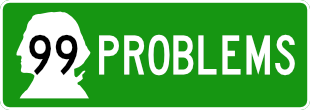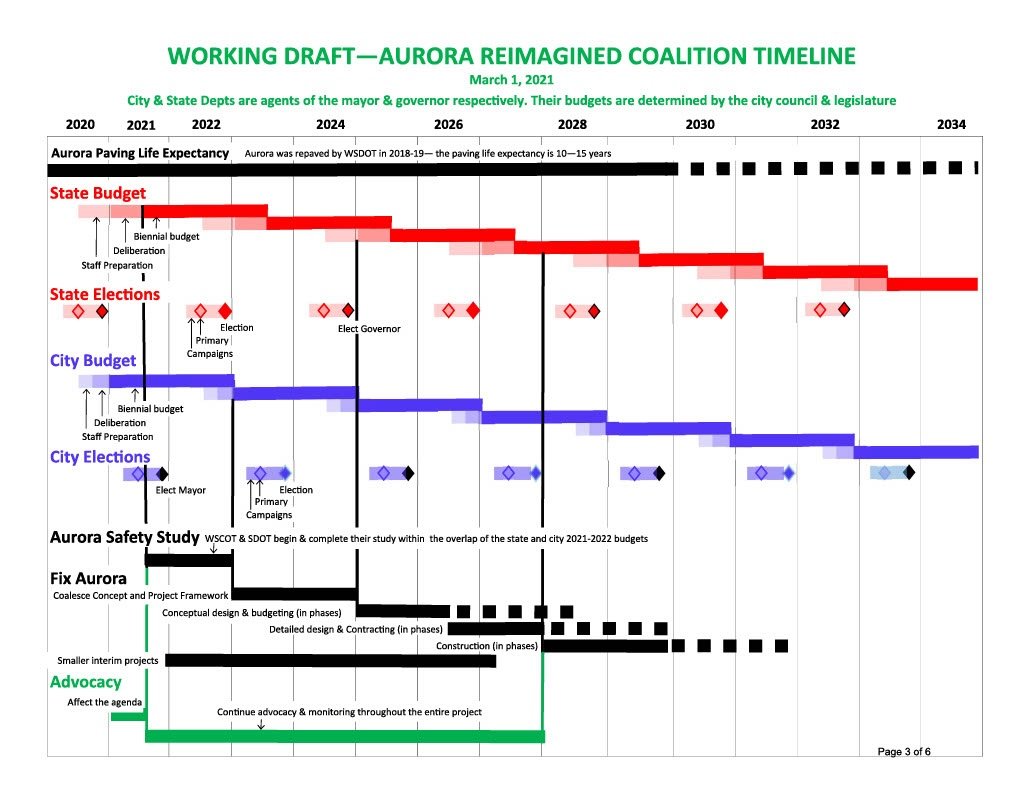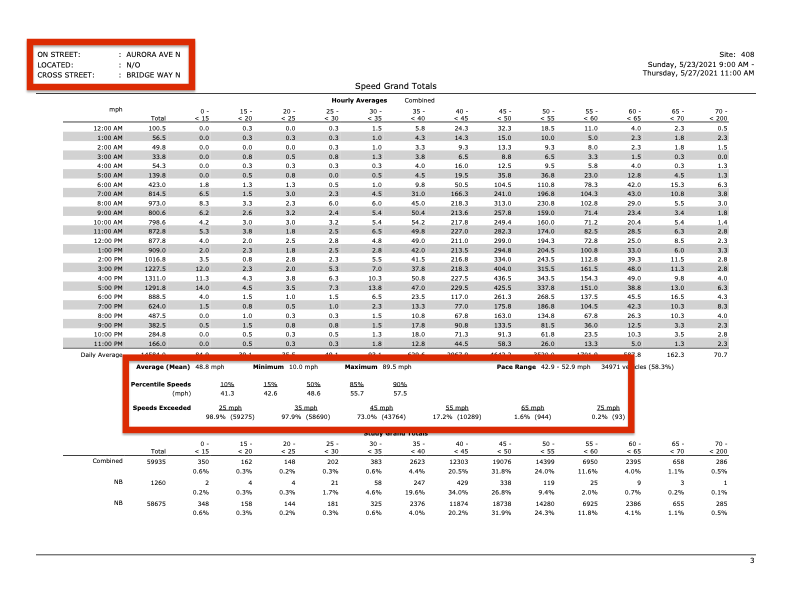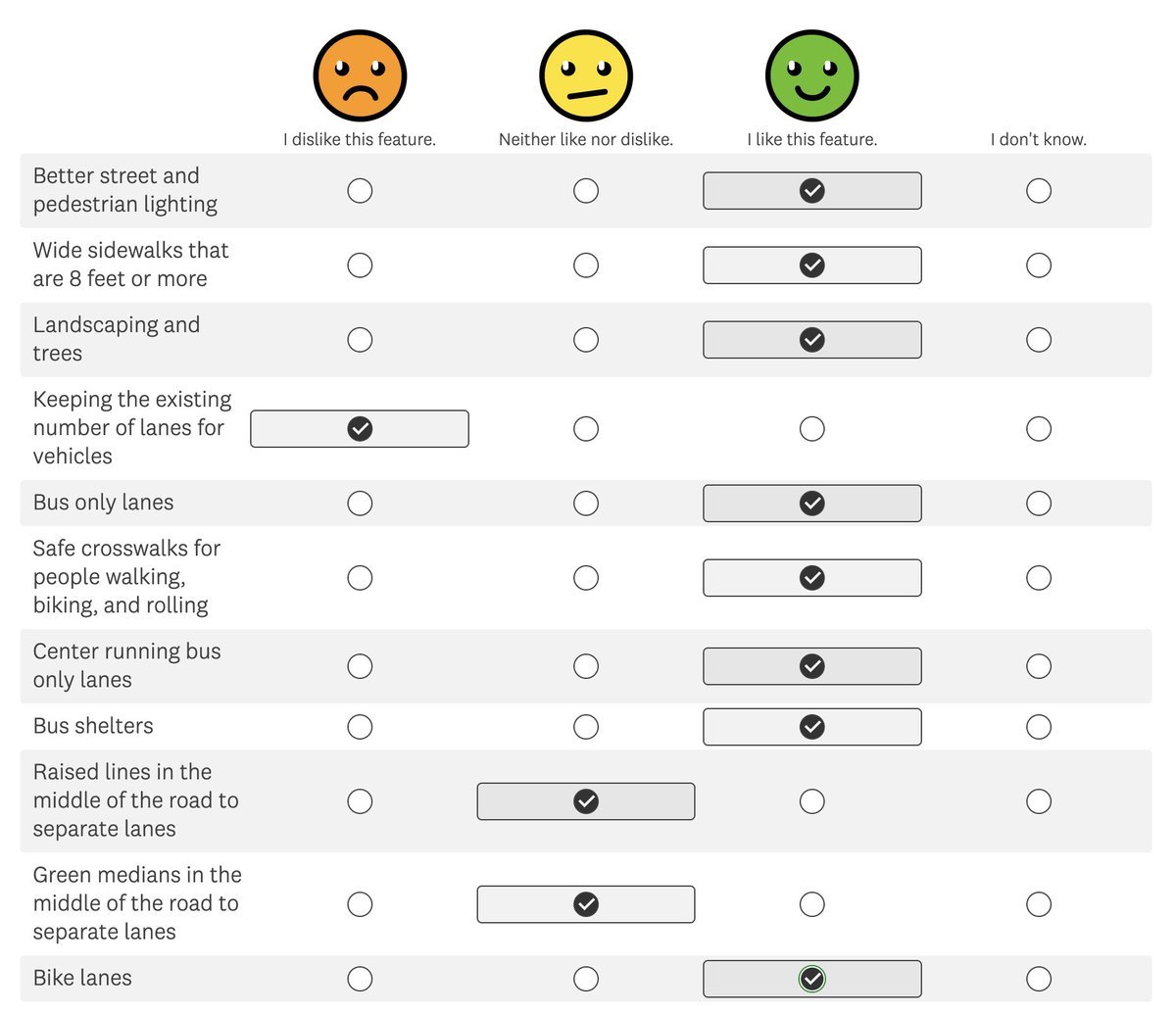The Department of Transportation is asking for your opinion on a set of sketches that show each segment of Aurora designed in three or four different ways. As a Coalition committed to improving Aurora for everyone, we're excited to see that these tangible ideas include bike lanes, bus-only lanes, and improved pedestrian infrastructure. But the city is presenting us with a false dichotomy, showing these improvements as distinct ideas that cannot be combined.
As we enter the third year of this process, let’s step back and take a look at where we are. When the WSDOT Active Transportation Division announced in 2021 a $1.5 million grant for the city of Seattle to study the Aurora corridor and make safety improvement for people walking, biking, and busing, a group of advocates and neighbors immediately formed the Aurora Reimagined Coalition. We knew about the many recent studies of Aurora that resulted in no tangible change, and that there was (is?) a real possibility that this study would also end up on a shelf collecting dust. We were determined to make sure that this effort would be successful.
We recognized that this would be a decades-long undertaking. Multiple funding sources would need to be secured, each with its own timeline and likely from grant sources that don’t even exist yet. Elections would come and go. Actual construction would obviously be done in phases. Persistent and ever-present community advocacy would be needed to bring this massive undertaking through the finish line.
We’re in this for the long haul.
In just three years we have seen a lot of quick movement. King County Metro joined the project, expanding the scope and adding $1 million to the study budget. $2 million in Vision Zero funding has been applied to the project. Another $53.75 million is expected though not yet obligated, including the $50 million earmarked for a demonstration project in the corridor.
SDOT has conducted three community survey campaigns, spending hours connecting with community groups and individuals and listening to input. We’ve even done our own non-scientific, selection-biased survey. Increasing media attention and more community engagement is great to see. We need a coordinated and holistic re-design of the entire corridor, with broad community support from the start.
But we’re just at the beginning. SDOT’s recent sketches of alternative roadway layouts in each segment is just a precursor to an actual corridor design that shows how all five segments connect. That would then be followed by an Environmental Impact Study, which is sure to be scrutinized and challenged in courts by opponents. Only after that would be begin to see a real design for specific intersections and key parts of the corridor, what’s called 10% Design. Somewhere in there SDOT needs to address the Aurora Bridge and the Woodland Park sections, which are currently left out of the Aurora Ave Project.
SDOT’s recent acknowledgement of the long project timeline.
And that’s just the transportation component of Aurora. What about land use, affordable housing, business displacement, stormwater run-off, public safety, prostitution? So many different entities have yet to step in to the process of creating an Aurora corridor that meets the needs of the 21st Century. We’re just at the beginning of the journey. These sketches SDOT released are just one small step on the path to a reimagined Aurora Ave N.
That being said, we are excited about these sketches and the options that are being discussed.
On the positive side, it's great to see lane reductions, center-running bus lanes, and bike lanes are all still "on the table". These elements are some of the boldest ideas we've seen from SDOT and it's encouraging that they're still being considered, even if alongside an option like "maintain capacity."
Glaringly absent from these segment design sketches is the Aurora Bridge and the Woodland Park Zoo sections of the corridor. These unique parts of Aurora apparently require different, later analysis. In conversations with SDOT, though, ARC has been told there is no timeline yet for that later analysis.
We cannot accept this. The Aurora Bridge must be part of the corridor design. Just as with every arterial that crosses the Ship Canal, the Aurora Bridge is a travel chokepoint, impacting buses, freight, and cars equally. Addressing this chokepoint now and identifying how we want to allocate space on the bridge is critical to the success of any freight, transit, biking, or walking network that feeds into the bridge. One small gap in an otherwise perfect route means it’s functionally useless for a significant number of people.
A reimagined roadway for the Aurora Bridge
The Aurora Bridge is over 90 years old and functionally obsolete. It likely needs to be expensively retrofitted or completely rebuilt. Should we maybe be looking at the Aurora Bridge first, before discussing the rest of the corridor, not waiting indefinitely to study it?
Similarly, the Woodland Park segment is too important to ignore. Like the rest of the corridor it has its own specific challenges. But all of the segments of the corridor affect, and are affected by, all the other segments. An inconsistent corridor will affect everyone who uses it. The roadway design through Woodland Park simply must be addressed concurrently with the rest of the corridor. And the timing is perfect for that. The Woodland Park Zoo just started a long-range planning process and is interested in creating safe connections to the east side of the Zoo. Now is the time to be talking about this segment.
From the beginning we have emphasized that each segment is different. It’s no coincidence that the fastest average speeds are found in Segments 1 and 2, where it’s officially designated a “speedway,” where there is a freeway-like median, where there are zero traffic lights, few turning motions, and wide lanes. The urgent question is “What is the city’s target speed?” The speed limit is just a sign on the side of the road. If you want people actually drive slower, you design the road so that it’s uncomfortable to drive fast.
The speed limit from Green Lake to Downtown is 40 miles per hour. But the actual average speed that people drive is 48 mph. Recent speed studies show 17% of drivers exceed 55 mph. Narrowing lanes, adding traffic lights, adding street trees, adding bike lanes and wider sidewalks, and removing lanes can all reduce speeds. We need all of these ideas to be implemented, but we also want to know what speed SDOT is expecting people to drive in the proposed road layouts. If it’s too early to assign an expected speed to the sketches, then at least tell us what the goal is. How fast does the city want cars to be moving on Aurora Ave N?
SR-99 working exactly as designed.
That question is yet to be answered. The purpose of the segment design sketches and the community engagement process this month is to hear where the community wants bike lanes on Aurora versus where the community wants center running transit on Aurora versus where the community wants wider sidewalks versus...
This is a false dichotomy (trichotomy?). We urge everyone to state unequivocally that we want all three - better sidewalks, a complete bike corridor on Aurora, AND improved transit frequencies.
Since we first came together as a coalition we have been uncompromising in our belief that a redesigned Aurora Ave N must have space for people walking, biking, rolling, busing, and driving. Take SDOT's survey and tell them you want a complete north-south bike route, center-running transit-only lanes, safe sidewalks, AND space for cars and trucks in each of the five segments of Aurora.






